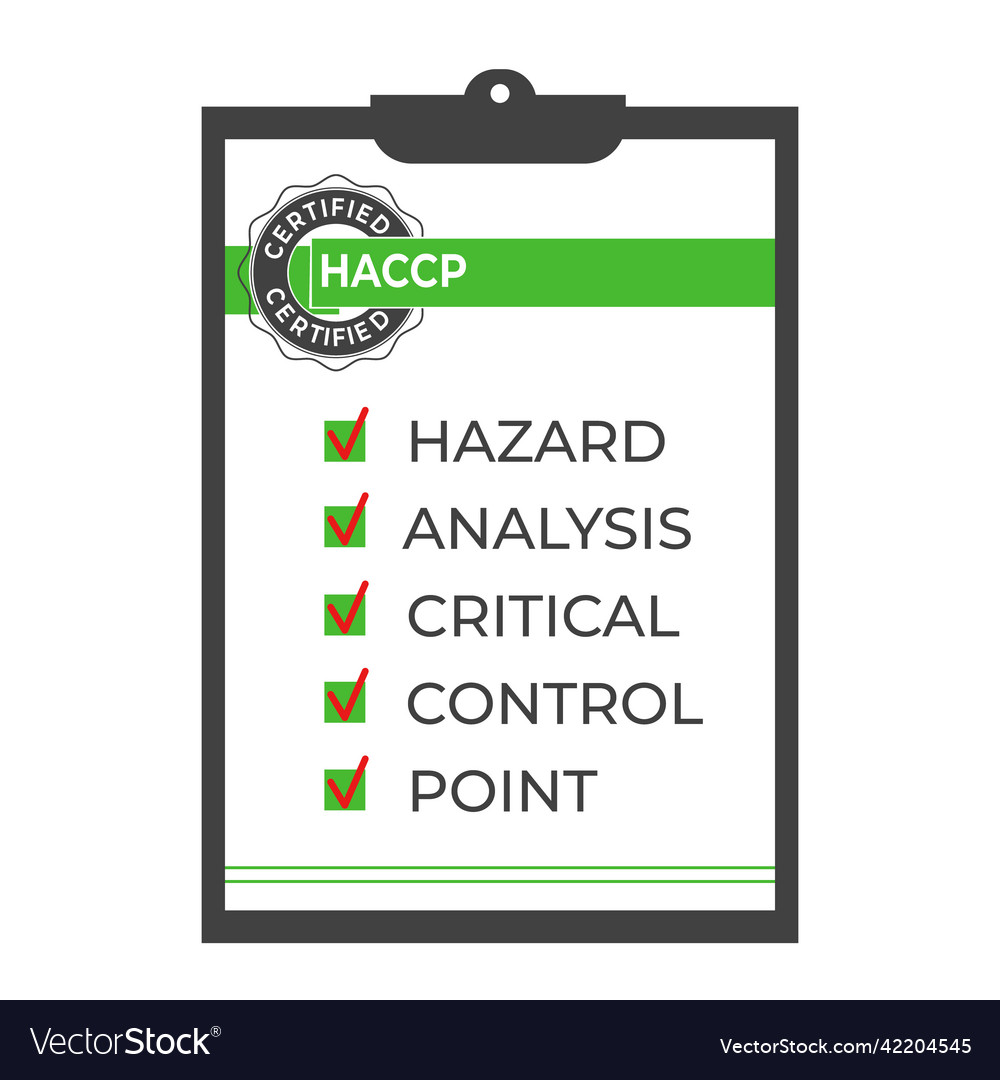Hazard Analysis and Critical Control Point
HACCP Overview and Principles
HACCP is a food safety system designed to identify and control hazards * that may occur in the food production process. The HACCP approach focuses on preventing potential problems that are critical to food safety known as 'critical control points' (CCP) through monitoring and controlling each step of the process. HACCP applies science-based controls from raw materials to finished product. It uses seven principles standardized by the Codex Alimentarius Commission.
Principle 1. Conduct a hazard analysis to identify hazards associated with the food and measures to control those hazards. Hazards could be biological (ex: pathogens); chemical (ex: toxins); or physical (ex: metal fragments).
Principle 2. Identify the critical control points (CCPs). These are points of the process at which the hazard can be controlled or eliminated (ex: cooking).
Principle 3. Establish critical limits for each CCP. A critical limit is the criterion that should be met to ensure food safety in a product (ex: minimum cooking temperature and time to ensure elimination of harmful bacteria).

Principle 3. Establish critical limits for each CCP. A critical limit is the criterion that should be met to ensure food safety in a product (ex: minimum cooking temperature and time to ensure elimination of harmful bacteria).
Principle 4. Establish CCP monitoring procedures to ensure each CCP stays within its critical limits. Monitoring involves a series of observations or measurements to determine if the CCP is under control (ex: determine who and how temperature and time will be monitored during cooking).
Principle 5. Establish corrective actions if the CCP is not within the established limits. By applying corrective actions, the control of hazards is regained (ex: reprocessing or disposing of food if the minimum cooking time and temperature are not met).
Principle 6. Establish verification procedures to confirm that the HACCP plan is operating effectively and accordingly to written procedures. This verification may include reviewing HACCP plans, CCP records, microbial sampling (ex: testing time and temperature recording devices to verify that are calibrated and working properly
Principle 7. Establish record-keeping and documentation procedures that demonstrate that HACCP is working properly. This includes monitoring documentation, actions taken to correct a potential problem, validation documents (ex: scientific information that supports the use of specific time and temperature for cooking).
*A hazard is any biological, chemical or physical agent that is likely to cause illness or injury.
Need for HACCP
In the past few years the food industry has faced new challenges such as the increasing number of emerging pathogenic bacteria (ex: E. coli 0157:H7), increasing public concern on chemical contamination of food (ex: lead in food, allergens). HACCP prevents and controls these and other major food safety concerns on the process; minimizing food safety risks on the product. HACCP allows food producers to offer a safer product to the consumers, protecting their health and life.
Benefits of HACCP
Although the main goal of HACCP is food protection, there are other benefits acquired through HACCP implementation, such as:
Increase customer and consumer confidence
Maintain or increase market access
Improve control of production process
Reduce costs through reduction of product losses and rework
Increase focus and ownership of food safety
Business liability protection
Improve product quality and consistency
Simplify inspections primarily because of the recordkeeping and documentation
Alignment with other management systems (ISO 22000)
Cost of Implementing and Operating HACCP
The cost of HACCP is associated with the initial analysis of the individual company and the standards to which they operate prior to development and implementation of the system. Some of the costs involved during the implementation and maintenance of HACCP are as follows:
Implementation Costs
Consultant fees
Investment in new equipment
Staff training
Structural changes to the plant
Staff time in documenting the system
Operational Costs
Record keeping
Product testing
Staff training
Managerial or supervisory time
Get In Touch
SAUDI ARABIA
7614, Istanbul Street, As Sulay District, Exit - 16, Riyadh, Saudi Arabia - 14264
+966545731273
INDIA
Plot No: 7,S2, Lakshmi Nagar, First Main Road, Chennai - 600074
044-31488452
© BQS Certifications. All Rights Reserved.
